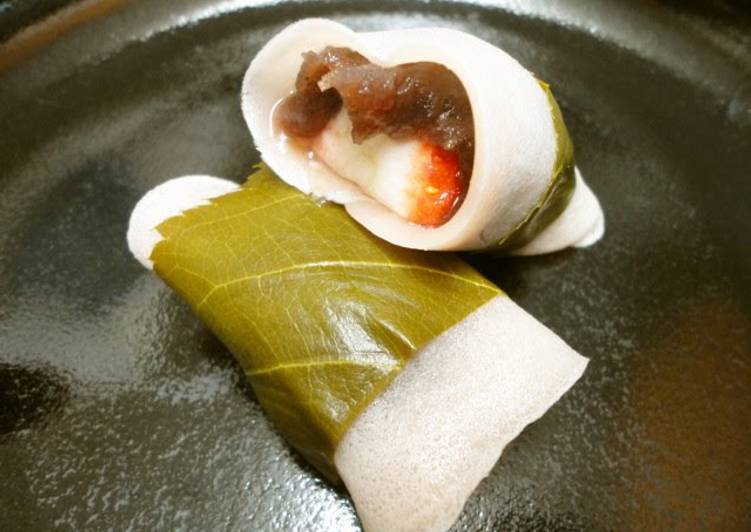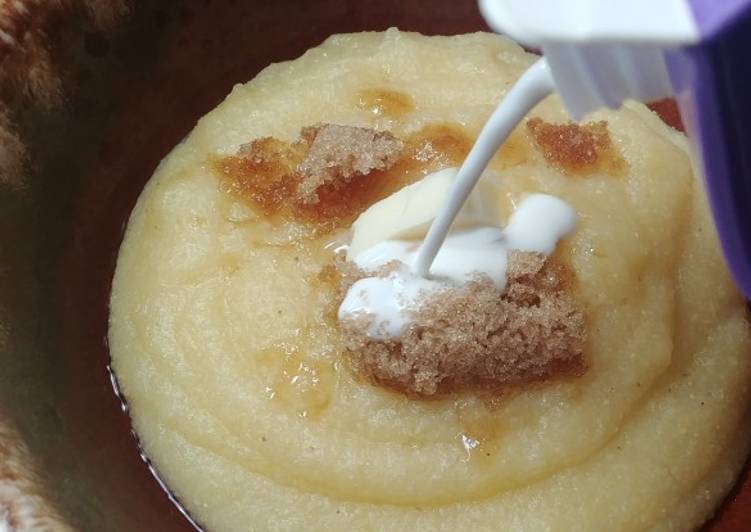
Hey everyone, I hope you are having an amazing day today. Today, I’m gonna show you how to make a special dish, kanto-style sakura mochi with strawberries. One of my favorites. For mine, I will make it a bit tasty. This is gonna smell and look delicious.
Great recipe for Kanto-Style Sakura Mochi with Strawberries. I wanted some treats to celebrate the Doll Festival holiday! I couldn't decide between sakuramochi or strawberry daifuku, so borrowing from the best of both, I came up with this! A tiny amount of food coloring will produce an elegant,.
Kanto-Style Sakura Mochi with Strawberries is one of the most popular of recent trending foods in the world. It is easy, it is quick, it tastes delicious. It’s appreciated by millions every day. They’re fine and they look fantastic. Kanto-Style Sakura Mochi with Strawberries is something which I have loved my whole life.
To begin with this recipe, we must first prepare a few components. You can cook kanto-style sakura mochi with strawberries using 10 ingredients and 12 steps. Here is how you cook that.
The ingredients needed to make Kanto-Style Sakura Mochi with Strawberries:
- Prepare 50 grams Cake flour
- Make ready 20 grams Shiratamako
- Prepare 100 grams Koshi-an (store-bought)
- Take 4 to 8 Strawberries
- Get 4 to 8 Sakura leaves preserved in salt
- Take 2 tbsp Sugar
- Make ready 1 pinch Salt
- Get 100 ml Water
- Take 1 dash Red food colouring
- Get 1 Vegetable oil
The white part has the delicious creamy flavour with condensed milk and the two together it is the perfect Strawberry and Cream! Strawberry Mochi is one of our family's favorite desserts, along with Mochi Ice Cream , Matcha Mochi , Daifuku , and Sakura Mochi. The style of Sakura Mochi in Japan actually differs by region. Generally, the east of Japan or the Kanto region (Tokyo area) uses shiratamako (sweet rice/glutinous rice flour 白玉粉) as the main ingredient for mochi.
Instructions to make Kanto-Style Sakura Mochi with Strawberries:
- Soak the salted sakura leaves in water to desalt for about 30 minutes. Change the water occasionally.
- Add just a bit of the water into the shiratamako, and knead well until lumps are completely gone.
- Add the sugar, salt, and food coloring to the bowl. Add half of the remaining water, and continue to mix.
- Sift in the flour, adding it in several portions. Alternate with small additions of the remaining water, while mixing until smooth.
- Let the mixture sit for 30 minutes.
- In the meantime, remove the hulls from the strawberries, rinse them, and gently wipe off the excess water. If the strawberries are big, cut in half.
- Remove the cherry leaves from the water, and gently wipe off the moisture. If the leaves are big, cut them in half, and remove the tough veins.
- Divide the anko paste into 8 equal portions and wrap each portion around a strawberry.
- Lightly grease a frying pan with oil, heat on low, then ladle in the batter. Using the back of the ladle, flatten the batter into a 1-mm thick, 10 x 6 cm round crepe.
- When the mochi batter has hardened, turn it over to cook the other side. The surface should be cooked just to the point where the batter is dry (do not brown).
- Cool the batter, then wrap the balls of anko from Step 8.
- Then wrap each cake with a sakura leaf.
The style of Sakura Mochi in Japan actually differs by region. Generally, the east of Japan or the Kanto region (Tokyo area) uses shiratamako (sweet rice/glutinous rice flour 白玉粉) as the main ingredient for mochi. It resembles a mini pancake rolled up. But the traditional springtime dessert in Japan is sakura mochi, which comes in two types: Kanto-style mochi which is a flat piece of smooth mochi wrapped around anko (red bean paste), and Kansai-style mochi which has a chunkier texture of mochi than the Kanto-style. Both are served wrapped in a cherry blossom leaf.
So that is going to wrap it up with this exceptional food kanto-style sakura mochi with strawberries recipe. Thanks so much for your time. I am confident you will make this at home. There is gonna be more interesting food in home recipes coming up. Don’t forget to bookmark this page in your browser, and share it to your family, colleague and friends. Thanks again for reading. Go on get cooking!

